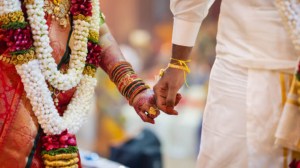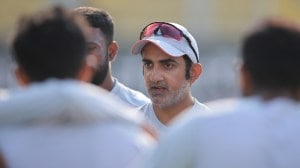The four hours to Indira Gandhi’s death: Dr P Venugopal recalls
In his memoir, the former AIIMS director talks of the futile attempt to save the PM's life, the hours of tension in Cong that followed, and his encounters with other PMs and leaders
 High Court Judges Inspecting the spot where Indira Gandhi was shot down at No.1 Safdarjang on 5.8.86. (Express Archive photo by RK Sharma)
High Court Judges Inspecting the spot where Indira Gandhi was shot down at No.1 Safdarjang on 5.8.86. (Express Archive photo by RK Sharma) Four hours trying to save Indira Gandhi’s life, meeting Atal Bihari Vajpayee as he was brought in for treatment during Emergency, and sharing a bond with “Telugu bidda (son)” P V Narasimha Rao.
As the head of AIIMS, as the surgeon who carried out India’s first heart transplant, and as doctor to the country’s prime ministers, Dr P Venugopal was witness to several turning points in the country’s history, recounted by him in his memoir Heartfelt, published by HarperCollins India.
Venugopal writes at length about October 31, 1984, the day Indira Gandhi was assassinated. It began “as any other day for me”, he recalls, till a junior rushed in around 10 am and gasped, “Mrs Gandhi has been admitted to casualty.”
He remembers sprinting across, to chaotic scenes, to AIIMS personnel milling around and Mrs Gandhi’s aides M L Fotedar and R K Dhawan crying. “I was shaken to see the slender figure on the bed… she was drenched completely in her own blood… The delicate face was pale… I saw that they were trying to transfuse the rare O-negative type, which seemed a futile exercise to me as what was going in was coming out… I ordered her to be taken to the OT… At one point, I turned to look back and saw my own bloody footprints… as they removed her sari, bullets started falling out all over the floor. We were to know later that thirty-three bullets had been fired and thirty had hit her; some had passed through her body and some were lodged inside.”
Venugopal writes that his plan was to stem the bleeding by putting her on the bypass machine and clamping the descending aorta so that no blood flowed to the abdomen, which was riddled with bullets. “What appeared was that she had fallen at the first bullet, and the people accompanying her had run back, leaving her alone on the ground. This provoked the assassin to step right up and empty multiple rounds from his machine gun into her at point-blank range… I maintain that if she had been covered or dragged to cover, she would have survived the first couple of bullets.”
Venugopal recalls furiously working through the next four hours, changing OT clothes thrice “as they kept getting blood-soaked”. “Around 2 pm, we tried to take her off the bypass, but were not able to revive her.”
He goes on to talk about a hospital room becoming “the hub of discussion, debate and heated parleys for the next few hours”. “Rajiv Gandhi, who was touring the eastern part of the country, was on his way back, and the consensus was to wait for his arrival… Snatches of conversations I caught indicated that the main concern was if the President would be ready to swear Rajiv in as Prime Minister. The debate, with Arun Nehru pitching in, was whether the Vice President, who was officiating for the President travelling overseas, could be borne upon to do the honours… The general feeling was that the President may call upon the senior-most cabinet member and throw a spanner in the works!… Later that evening, President Zail Singh stepped in, looking quite rattled for his normally impassive self.”
Rajiv walked in sometime in the afternoon, “pale-faced, straight from the airport and in his street clothes… I could see that he was trying hard to keep his emotions in check as he looked at her briefly and walked out… After this, the team started on the embalming, their goal being preservation for at least three days.”
Venugopal also writes about the anti-Sikh riots in Delhi that followed: “The outpouring of public grief around us was heartrending, and the anger welling up in the Congress ranks was explosive. Rajiv and the family were very quiet and pensive. Arun Nehru held sway in the anterooms, snapping out orders… Strong statements flew back and forth, and I am not surprised they may have led to the unfortunate events that unfolded.”
AIIMS was not exempt, he writes. “Sikh guards at the hospital cut their hair overnight… My Sikh perfusionist disappeared from the OT even as we were working on the Prime Minister. Eventually, he resigned from AIIMS.”
Venugopal also writes about his experience with “a war zone”, when he was roped in to help the Mukti Bahini during the Bangladesh War, early on in his career. He says he was just getting into the “more regular swing of resident life”, when he received an unusual request from the Ministry of Health. “It wanted a team of doctors to be deputed to Tripura. Specifically, from AIIMS, a cardiac surgeon and two anaesthetists… The mission? To be on site for Mukti Bahini casualties.”
The Mukti Bahini was a unit formed of Bengali military, paramilitary and civilian officers, fighting to secure the liberation of Bangladesh, and unofficially working with the Indian government. Army doctors were not called in, Venugopal writes, “as their presence in what was seemingly a ‘non-war zone’ would raise concerns”.
“As the plane landed in Tripura, it was with a jolt that we realized one wing of the plane was actually hovering over Pakistan (what was East Pakistan then)… We were given a military-style debriefing… and furnished with a personal kit that included heavy boots for tramping through the jungles and some camouflage clothing.”
While their days were normal, tranquil even, writes Venugopal, “After dinner is when the action would begin… We would sit ready to spring to work, as under cover of darkness, the Mukti Bahini and its Indian trainers would launch guerrilla attacks on the Pakistani forces and installations. It was our responsibility to then drive out to these areas that had been identified to us earlier and pick up the wounded… We would carry on tending to them till the wee hours of the morning and then take turns to rest.”
(Excerpts taken with permission from HarperCollins India)



- 01
- 02
- 03
- 04
- 05




























